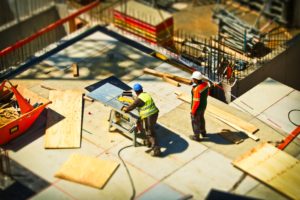
The Census Bureau reported [1]that residential construction spending fell 0.9% to $508.2 billion in October from September’s $512.6 billion.
New single-family housing construction rose 1.6% from September to $279 million but is down 3.1% year-over-year from October 2018’s $288 million.
Single-family spending has been increasing month-over-month from June 2019 when residential spending was $264 million.
The National Association of Home Builders [2]reported last month the average single-family lot price reached a new high in 2018, with half of the lots selling at or above $49,500.
Data shows the biggest rise in lot values was in the West South Central division, where median-lot values more than doubled since the housing boom years.
Lot values, however, adjusted for inflation have not reached housing-boom peaks. Lots sold for more than $43,000 during those years, which is over $53,000 when converted in 2018 money.
The West South Central Division—made up of Texas, Oklahoma, Arkansas, and Louisiana—historically has had the lowest lot values in the nation. The NAHB states that lot values began rising in 2013 and reached the national average by 2015.
According to the NAHB, as of 2018 lot values in the division sell for more than $62,000, which is $25 above the national average. Lot values were outpacing prices during the housing boom when lots were under $30,000.
New England had the most expensive lots in the nation, with half of all sold single-family homes had lot values higher than $140,000.
“New England is known for strict local zoning regulations that often require very low densities. Therefore, it is not surprising that typical single-family spec homes started in New England are built on some of the largest and most expensive lots in the nation,” said the NAHB.
Black Knight revealed [3] last month that home-price appreciation had its largest single-month increase in two years in September, rising 0.2% to 3.95% for the month—the highest its been since March when home-price growth was in a 16-month slow trend.